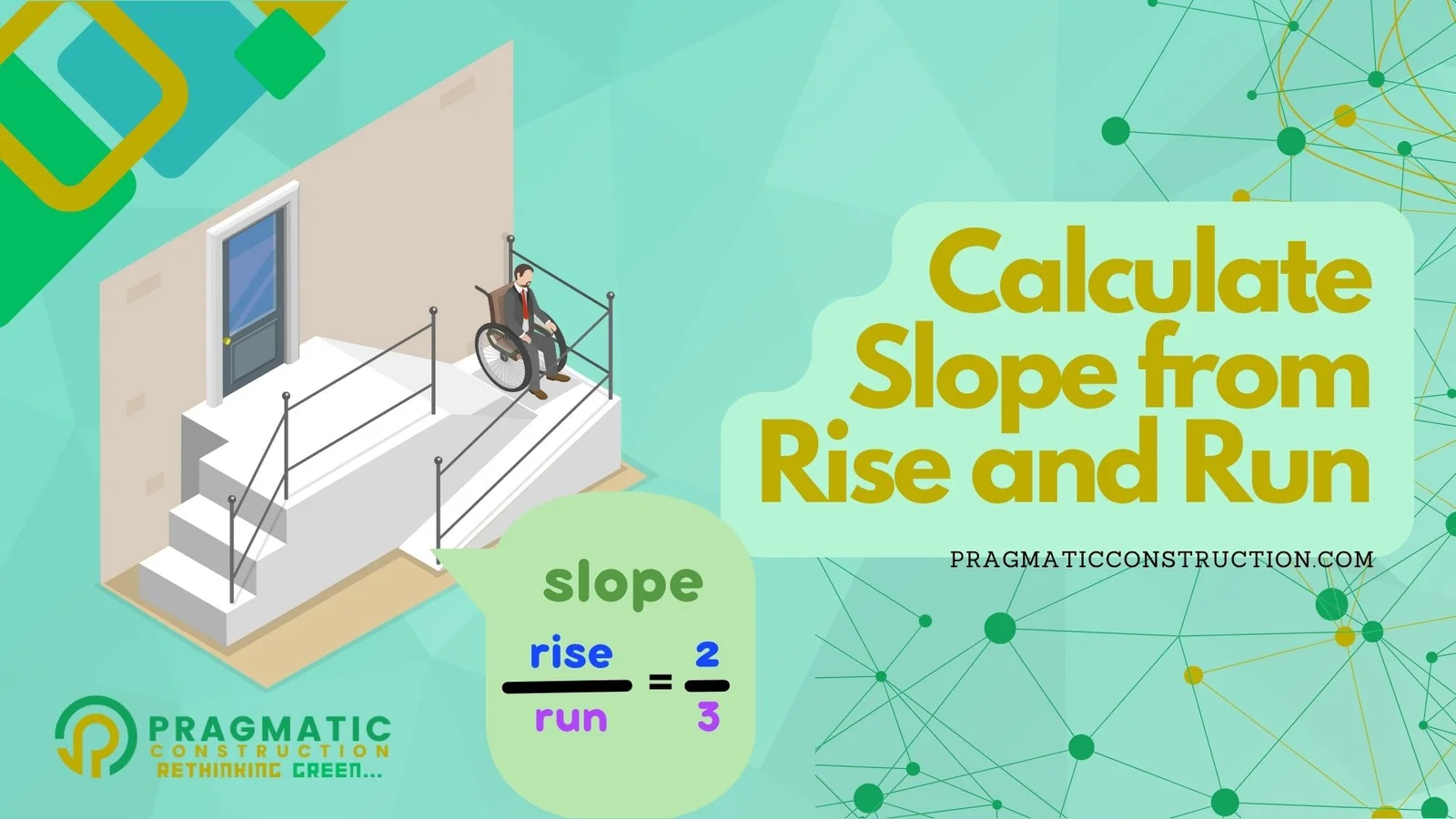When dealing with various structures like driveways, roofs, stairways, gable walls, or any other inclined surface, understanding the angle of inclination, or slope, is crucial for design, construction, and safety considerations.
One common method to calculate this slope involves using the rise and run measurements along with trigonometric functions.
Angles of rise and incline play significant roles in various fields such as construction, engineering, architecture, and physics.
Understanding these angles and how to calculate them is essential for designing structures, determining slopes, and analyzing physical phenomena.
In this article, we’ll delve into the process of calculating slope using rise and run measurements and provide a detailed example to illustrate the concept.

Understanding Rise and Run:
Before we proceed with the calculation, let’s clarify what rise and run represent in such measurements:
Rise: The vertical distance between two points, typically measured from the lowest point to the highest point.
Run: The horizontal distance between two points, measured along the ground or a flat surface.
These two measurements are fundamental in determining the slope of an inclined surface.
Angle of Rise
The angle of rise refers to the angle formed between the horizontal line and a line representing the upward direction of an inclined surface or object. It represents the steepness of the incline in relation to the horizontal plane. The angle of rise is crucial in construction and engineering projects, particularly when designing ramps, driveways, or roads.
Angle of Incline
The angle of incline, often simply referred to as the slope angle, is similar to the angle of rise but can be more generalized. It represents the angle formed between the inclined surface or object and the horizontal plane. This angle is fundamental in various fields, including physics, where it describes the inclination of surfaces in gravitational or inclined plane problems.
Calculating Rise
Rise refers to the vertical distance between two points, typically measured from the lowest point to the highest point along an inclined surface. Calculating rise is essential for determining the slope of an incline or the height difference between two points. The rise can be calculated using trigonometric principles, particularly in conjunction with the angle of incline or rise.
Method for Calculating Rise
Rise refers to the vertical distance between two points, typically measured from the lowest point to the highest point along an inclined surface. Calculating rise is essential for determining the slope of an incline or the height difference between two points. The rise can be calculated using trigonometric principles, particularly in conjunction with the angle of incline or rise.
There are several methods for calculating rise, depending on the available information and the specific scenario:
Trigonometric Methods
If the angle of incline or rise is known, rise can be calculated using trigonometric functions such as sine, cosine, or tangent. For example, if the angle of incline is given, rise can be calculated using the formula: Rise = Run * tan(Angle).
Using Rise and Run
Rise can be directly calculated if both the rise and run (horizontal distance) between two points on an incline are known. The rise is simply the vertical distance traveled over the run.
Measuring Instruments
In practical scenarios, rise can be measured directly using instruments such as a tape measure, level, or inclinometer. By measuring the vertical distance between two points, rise can be determined accurately.
The Mathematics Behind Slope Calculation:
To calculate the slope of an inclined surface using rise and run measurements, we employ basic trigonometry. The tangent of an angle in a right triangle is defined as the ratio of the length of the side opposite the angle (the rise) to the length of the side adjacent to the angle (the run). Mathematically, this relationship is expressed as:
tangent(theta) = Rise / Run
Where:
theta represents the angle of inclination (slope).
Rise is the vertical distance.
Run is the horizontal distance.
To find the angle theta, we use the arctan function (also known as inverse tangent) to solve for theta:
theta = arctan(Rise / Run)
This formula provides the angle of inclination in either radians or degrees, depending on the unit preference.
Example Calculation:
Let’s consider an example to demonstrate the calculation of slope using rise and run measurements. Suppose we have a stairway with the following measurements:
Run: 12 feet 2 inches (converted to 146 inches)
Rise: 8 feet 11 inches (converted to 107 inches)
We need to calculate the angle of inclination for this stairway.
Convert the measurements to inches:
Run: 12′ 2” = 12 * 12 + 2 = 146 inches
Rise: 8′ 11” = 8 * 12 + 11 = 107 inches
Calculate the slope using the formula:
theta = arctan(Rise / Run)
Compute the angle using a calculator:
theta ≈ 36.2369 degrees
Another Example
Let’s consider a practical example to illustrate the calculation of rise and its relationship to the angle of incline. Suppose we have an inclined plane with a slope angle of 30 degrees. We want to determine the rise of this incline.
Using trigonometric principles, we can calculate the rise as follows:
Given:
Angle of Incline (θ) = 30 degrees
Using the formula:
Rise = Run * tan(θ)
Assuming a run of 10 meters (for illustrative purposes), we can calculate the rise:
Rise = 10 * tan(30 degrees)
Rise ≈ 5.7735 meters
Therefore, the rise of an incline with a 30-degree angle is approximately 5.7735 meters.
Rise and Run/Arctan Function
Conclusion:
In conclusion, understanding how to calculate the slope of an inclined surface using rise and run measurements is essential for various applications in construction, engineering, and architecture. By applying basic trigonometric principles and the arctan function, we can accurately determine the angle of inclination, enabling better planning, design, and implementation of structures while ensuring safety and stability.


















